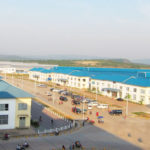
13 Aug Cambodian Multinational Trade Agreements
Active
- Cambodia is a member of the ASEAN, alongside Brunei Darussalam, Indonesia, Laos, Myanmar, the Philippines, Singapore, Malaysia, Thailand and Vietnam. The ASEAN Free Trade Area was signed on January 28, 1992, and entered into force on January 1, 1993. In 2017, ASEAN accounted for 37.2% of Cambodia’s imports and 10.0% of Cambodia’s exports (latest data available), making the group Cambodia’s largest import and fourth-largest export partner. A number of free trade agreements (FTAs) have been signed by ASEAN.
- ASEAN-Mainland China: The ASEAN-Mainland China FTA covers goods and services. The FTA for goods came into force on January 1, 2005, and the FTA for services came into force on July 1, 2007. The agreement aims to eliminate tariffs, encourage investment and address the barriers that impede the flow of goods and services. The ASEAN-Mainland China Free Trade Area was last upgraded in 2015. In 2017, ASEAN was the recipient of 12.3% of mainland China’s exports and the source of 12.8% of imports. Total merchandise trade between ASEAN and mainland China grew by 215% between 2005 and 2016 (latest data available). Mainland China-Cambodia trade more than doubled between 2012 and 2016, reaching USD5.1 billion.
- ASEAN-India: The ASEAN-India trade in goods agreement came into force on January 1, 2010 for goods and on July 1, 2015 for services with the aim of minimising barriers and deepening economic linkages between the parties. Cambodia joined the agreement in July 2011. The agreement will lead to the progressive elimination of tariffs on all goods. ASEAN accounted for 10.2% of India’s imports and 12% of India’s total exports in 2017.
- ASEAN-South Korea: The ASEAN-South Korea FTA came into force in January and October 2010 for goods and services, respectively. The investment agreement entered into force on September 1, 2009. The agreements aim to create more liberal, facilitative market access and investment regimes between South Korea and ASEAN. A business council was set up in December 2014 to enhance economic cooperation between the parties and boost total trade to USD200.0 billion by 2020. ASEAN was the recipient of 11.2% of South Korea’s exports in 2017 and the source for 16.6% of imports. Total trade between ASEAN and South Korea grew by 68% between 2007 and 2017.
- ASEAN-Japan: The ASEAN-Japan FTA is for goods only and came into force on December 1, 2008. Cambodia joined the agreement in December 2009. This will lead to the progressive elimination of tariffs on all goods.
- ASEAN-Australia-New Zealand: The ASEAN-Australia-New Zealand FTA and Economic Integration Agreement for goods and services came into force on January 1, 2010. Cambodia joined the agreement on January 4, 2011.
- United States-Cambodia: A bilateral Trade and Investment Framework Agreement (TIFA) between the United States and Cambodia was signed and entered into force on July 14, 2006. The TIFA allows favourable trade terms with the United States, which is Cambodia’s largest exporting partner, accounting for 21.3% of Cambodia’s exports in 2016 (latest data available). The TIFA provides a forum to address bilateral trade issues and allows Cambodia and the United States to coordinate on regional and multilateral issues. As Cambodia forms part of the United States’ Generalized System of Preferences (GSP), many of its exports to the United States are exempt from tariffs.
- EU-Cambodia: Cambodia has been a major beneficiary of the EU’s GSP, which grants virtually all products – except arms and ammunition from less-developed countries – duty-free and quota-free access to the EU market. EU trade accounts for approximately 42% overall of Cambodia’s footwear and garments exports. In October 2018, the EU notified Cambodia that it would start the process for the withdrawal of their Everything but Arms preferential trade scheme. In February 2019 the EU launched the process that could lead to the suspension of Cambodia’s preferential access to the EU market.
- ASEAN-Hong Kong FTA (AHKFTA): Hong Kong and ASEAN began negotiating an FTA and an Investment Agreement in July 2014. After 10 rounds of negotiations, Hong Kong and ASEAN announced the conclusion of the negotiations in September 2017 and forged the agreements on November 12, 2017. The agreements are comprehensive in scope, encompassing trade in goods, trade in services, investment, economic and technical cooperation, a dispute-settlement mechanism and other related areas. The agreements will bring legal certainty, better market access and fair and equitable treatment in trade and investment, thus creating new business opportunities and further enhancing trade and investment flows between Hong Kong and ASEAN. The agreements will also extend Hong Kong’s FTA and Investment Agreement network to cover all major economies in South East Asia. The agreement came into force on January 1, 2019, but will take time for all members of ASEAN to comply because implementation is subject to completion of the necessary procedures. Hong Kong is a key export market and the reduction of tariffs will ease the trading process; Hong Kong’s potential as a key export market increases the importance of AHKFTA.
Under Negotiation
- Negotiations for an EU-ASEAN region-to-region FTA were launched in 2007. Talks were put on hold in 2009 to allow for bilateral FTA negotiations as building blocks towards a region-to-region agreement. ASEAN as a whole represents the EU’s third-largest trading partner outside Europe.
Sources: WTO Regional Trade Agreements database, HKTDC, ASEAN, UNCTAD, ASEAN, European Commission, Fitch Solutions





